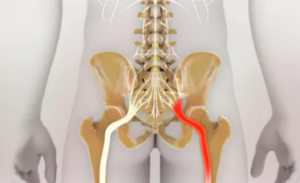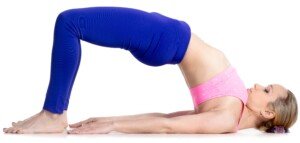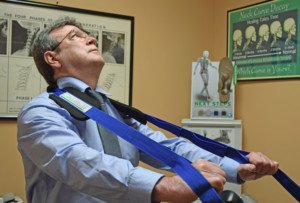
If you have strong core muscles, you are much less likely to ever develop sciatica, a potentially very painful condition.
“The most effective way of using strength training to prevent or lower the risk of sciatica would be to concentrate on the core muscles,” explains Dr. Tom Carpenter, corrective exercise specialist, certified personal trainer and chiropractor.
• Core stabilizers prevent sciatica
• Core movers prevent sciatica exercises
• Lower back muscles
Standard Plank
“For the core stabilizers, start with planks, with the toes and elbows on the floor,” says Dr. Carpenter. “Contracting the abdominal muscles, hold the body off the floor in a straight line, simulating a plank of wood.

Freepik.com
“Start by holding for five seconds and slowly build up to one minute. Always end this exercise by dropping the knees to the floor first, not the stomach.”
Progressed Plank
“To advance this exercise, go from a plank to a pike, where the buttocks are lifted up and abdominals contracted, causing the body to form a V shape,” says Dr. Carpenter. “Hold each position for five seconds and begin with 12 repetitions.”
Supine Bridge
“Supine bridges, both double and single leg, are also very helpful in strengthening the glutes, which are part of the core.”

Freepik.com/yanalya
Back Extension
“For the lower back, lie face down on a bench or exercise ball with the hands clasped behind the head. Extend the upper body backwards to full range of motion and hold for five seconds. Start with six reps and build up to 12.
“To increase the resistance, hold two five pound dumbbells with the hands to either the side of the head and extend the lower back.
“Eventually work up to rotating the torso slowly right, left and then back to center, when in extension.”
Below are variations of back extension exercises if you don’t have access to a fitness ball.

Freepik.com

Freepik.com, yanalya
Overhead Press and Lat Pull-Down
“Overhead presses and lat pull downs are also helpful,” says Dr. Carpenter. When performing the overhead press (barbell, dumbbells, kettlebells, heavy ball), do not hyperextend your lower back.

Freepik.com, katemangostar
Maintain an erect, non-exaggerated posture. If you can’t push the weight overhead without overextending your back, the weight is too heavy.
With the lat pull-down, do not let the bar fly back up and yank you upward. Your butt should remain in solid contact with the seat at all times.

reepik.com, jcomp
Control the release and keep your head neutral as you pull the bar back down.
Arm and Leg Raises
“Also, arm/leg raises are a great way to strengthen the core,” says Dr. Carpenter. “Starting on the hands and knees, extend the right arm out in front while extending the left leg out behind you.

Freepik, yanalya
“Hold for five seconds and then alternate to the other arm and leg, again holding for five seconds. Repeat six times.”

Photo credit: Aleesia Forni











